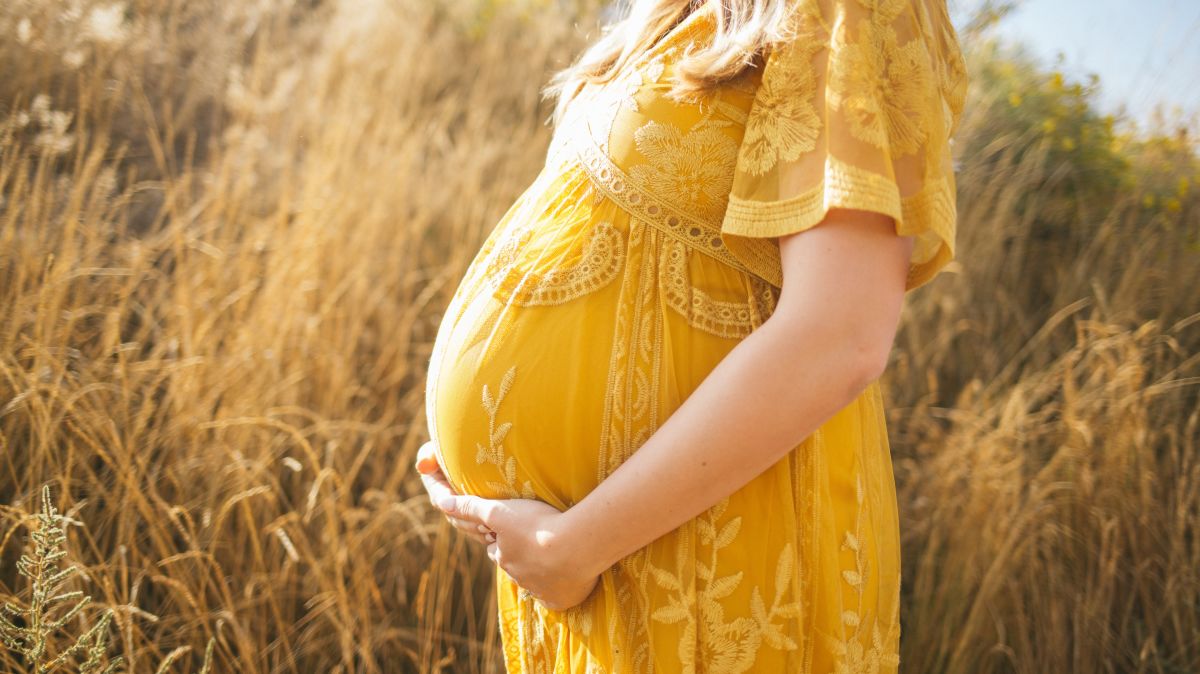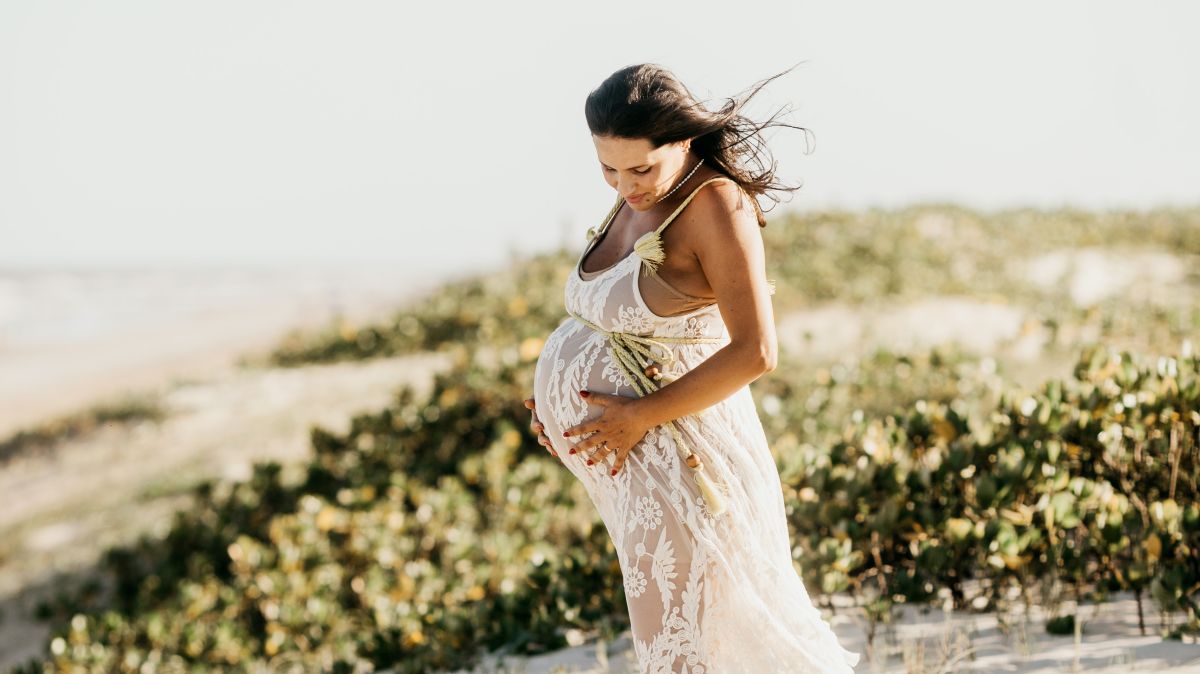Vitamin D (Calcitriol)

Individuals get vitamin D from three sources: sunlight, some foods (very small amounts), and supplementation.
Prenatal vitamins generally contain 400 international units (IU), but many organizations and researchers indicate pregnant women may need 1,000 to 4,000 IU during pregnancy. Fortunately, small exposure times to sunlight can fulfill this requirement, and women are not advised to take vitamin D supplementation without first speaking with their health care provider (HCP).
Deficiency during pregnancy can cause potential problems in both the mother and the baby, but research regarding deficiency and supplementation in general during pregnancy remains inconsistent and controversial. Despite this, it is often indicated that vitamin D deficiency during pregnancy is likely common.
However, most study conclusions agree that more research is needed regarding what constitutes deficiency, what occurs during pregnancy from deficiency, what would supplementation prevent, and if supplementation is recommended, in what dose and form (sunlight, food) would be the most optimal.
Pregnant women should talk to their HCP if they have little to no exposure to sunlight, have little consumption of calcium, eat mostly a plant-based diet, or have a malabsorption/gastrointestinal disorder that could prevent them from getting an adequate amount of vitamin D during pregnancy.
Background
Vitamin D is a fat-soluble group of nutrients (*see text box) produced from food or within skin that is exposed to sunlight. From these sources, it goes through a chemical process in the liver and kidneys to become what is called calcitriol (1,25-dihydroxyvitamin D or 1,25(OH)2D), the biologically active form of what is referred to as “Vitamin D".
Vitamin D3 (sunlight): cholecalciferol is made in the skin following exposure to sunlight: >> goes to liver >> becomes calcifediol >> goes to kidney >> becomes calcitriol (animal sources of vitamin D usually are this form, such as egg yolks and fish)
Vitamin D2 (plant form): ergocalciferol; plants contain vitamin D, but very, very little; humans require vitamin D either from sunlight or through supplements/fortified foods
Vitamin D is essential for the promotion of calcium absorption and normal bone growth and mineralization during pregnancy. The body must maintain calcium balance for vital functions. The process of calcium conservation – such as borrowing it from bone, which occurs during pregnancy – can only occur when the body has enough vitamin D.
Pregnancy
Adequate vitamin D status during pregnancy is important for fetal growth and specifically – fetal skeletal development and tooth enamel formation.
Vitamin D is also necessary for implantation, placental development, modulating the mother's immune response to the developing fetus, and regulating blood pressure and glucose tolerance.
A study published in October 2021 found that vitamin D may play a role in the maintenance of placental performance. Although more research is necessary, adequate vitamin D could help prevent placental-associated complications.
It is assessed that a very prominent difference in vitamin D metabolism occurs during pregnancy that does not happen at any other time. Researchers indicate that although this has been known for thirty years, it just started gaining research attention:
In the 1980s, after techniques for measuring the active form of vitamin D had been achieved, researchers began to measure the vitamin D status of pregnant women.
By 12 weeks of gestation, vitamin D levels are more than twice that of a non-pregnant adult and continue to rise two to three times above normal; these levels would likely be toxic to someone who was not pregnant, but are vital during pregnancy (likely for high calcium conservation).
Newborn vitamin D levels are highly dependent on the mother’s vitamin D status. Cord blood concentrations are usually 60% to 80% of the mother's vitamin D levels. Therefore, it is estimated that vitamin D requirements are higher during pregnancy, but the actual requirement amount is still debated.

Deficiency/Low Levels
Pregnant women who are considered high-risk for vitamin D deficiency likely include: women with a low calcium concentration, bone pain, gastrointestinal disease, alcohol abuse, a previous child with rickets, and/or those receiving drugs which reduce vitamin D.
The first significant report of vitamin D deficiency in women of childbearing age in the United States (U.S.) included data from 1988 to 1994, which revealed that 42% of African–American women were deficient.
Currently, studies from around the world show high percentages of vitamin D deficiency during pregnancy, which greatly depends on culture, sun exposure, and clothing. It was estimated in 2006, that 28% of U.S. pregnant or lactating women were at risk for vitamin D deficiency or inadequacy.
However, a standard definition of vitamin D deficiency in pregnancy has not been defined, which makes studying the true prevalence and associated outcomes very difficult.
Despite parameters defining it, deficiency in a pregnant woman has been assessed to potentially cause fetal development problems involving growth, bone density, immune function, risk of infection, and potentially early childhood behavior.
Further, vitamin D deficiency is a known major cause of hypocalcemic (low calcium) seizures in newborns and infants, which can be caused by severe deficiency in the mother.
Further, possible relationships between low vitamin D and high blood pressure, gestational diabetes, miscarriage, preterm birth, fetal growth, and postpartum depression have been identified but, overall, remain inconsistent.
However, the relationship between low vitamin D levels and preeclampsia appears to be a bit stronger. For example, a 2016 study in the United Kingdom concluded there was enough evidence to propose that addressing vitamin D requirements in pregnant women would decrease preeclampsia cases enough to make a positive impact on the national health budget.

Supplementation
Several organizations do not recommend routine vitamin D screening or supplementation since there is no overall agreement on what constitutes deficiency, what occurs during pregnancy from deficiency, what would supplementation prevent, and what dose would be the most optimal. Further, several studies have found no benefit or change in cord blood concentrations with supplementation.
For example, vitamin D supplementation may prevent persistent/recurrent wheeze (or asthma) in babies, but more research is needed to identify proper dosing. A different study that followed children through three years did not find a reduced risk with vitamin D supplementation, complicating possible recommendations.
Currently, vitamin D daily dose recommendations for pregnant women vary widely across organizations and published research studies, ranging from 400 IU to 4,000 IU; most studies indicate that 400 to 600 IU (current recommendation for pregnant women) is not nearly enough.
The U.S. National Academy of Medicine (formerly the Institute of Medicine) recommends 600 IU/day for pregnant women.
Although additional vitamin D through supplementation is a viable option for women assessed to be deficient, sunlight may be better/safer. Increased sun exposure is significantly associated with higher vitamin D levels than supplements. Supplements are recommend if sunlight is not readily obtainable (vitamin D supplements should always be taken with calcium; read label).
The amount of sunlight sufficient to achieve optimal vitamin D status varies depending on the time of year, the time of day, skin pigmentation, clothing, and what part of the skin is exposed. It is estimated (very generally) that 30 minutes of sunlight delivers approximately 50,000 IU of vitamin D with light-complexioned skin.

Darker-complexioned individuals absorb less vitamin D than individuals with a lighter complexion with the same amount of exposure to sunlight (which is assessed to be a protective measure, as the amount of pigmentation linearly reduces vitamin D absorption).
The American College of Obstetricians and Gynecologists indicates there is insufficient evidence to support a recommendation for screening all pregnant women (regardless of skin type) for vitamin D deficiency, but women considered at risk for deficiency can be screened through their HCP.
Further, ACOG states that if vitamin D deficiency is identified during pregnancy, most experts agree that 1,000 to 2,000 IU per day of vitamin D is safe, as higher doses have not been studied during pregnancy and more research is necessary (i.e. clinical trials).
Food Sources
Amounts of vitamin D ingested through food may account for as little as only 10% of vitamin D in the body, but can be obtained through fortified milk, juice, and yogurt, as well as egg yolks, salmon, and canned tuna.

Women should inform their HCP if they are vegan, vegetarian, or lactose intolerant, as these diets may indicate a higher risk of deficiency, especially during winter months.
Action
Pregnant women should talk to their HCP if they have little to no exposure to sunlight, have little consumption of calcium, eat mostly-plant based foods, or have a malabsorption/gastrointestinal disorder that could prevent them from getting an adequate amount of vitamin D during pregnancy.
For women concerned about their vitamin D status specifically, they can ask their HCP for a screening test, after a risks and benefits discussion (i.e. cost).
Women should also consider having an overall discussion with their provider regarding nutrition, as well as an assessment of their current diet. HCPs are trained to look for areas in which women may be able to improve their nutrition during pregnancy based on vitamins/minerals they may be lacking.
Resources
Vitamin D Fact Sheet (Oregon State University)